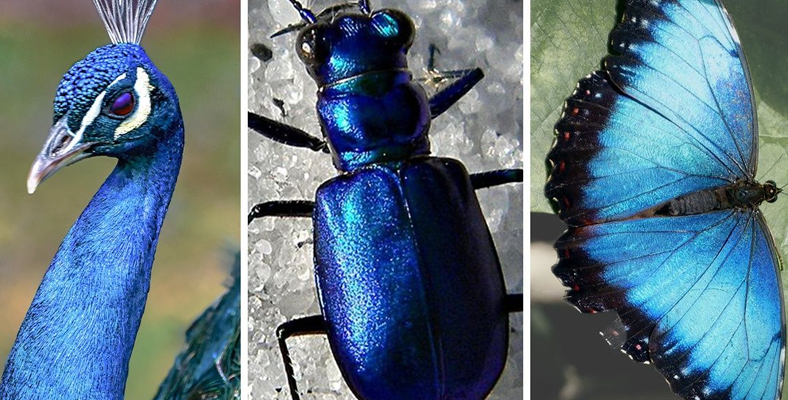When we lift our heads up and look at the sky or pay attention to the endless view of the blue sea, we may think that the color blue is all around us. However, this is not quite the case.
Plants, trees, flowers; fur, feathers, skin of animals… How many blue flowers come to your mind? Or what if we asked you to give an example of a deep blue animal? You have a few minutes to think…
Well, the color blue Why is it so rare in nature?
There are between 6 and 7 million light-sensitive cells, also known as cones, in our eyes that allow us to see colors.
There are 3 different types of cones in the eye of a person with healthy vision, and each of them; Sensitive to red, green or blue colors.
The information coming from millions of cones reaches our brain as electrical signals that transmit all kinds of light reflected by what we see, and these signals are It is interpreted as different color tones.
However, when we see a blue flower, our eyes are actually It absorbs the redness in that color and remains blue. So the flower that looks blue is part of the variety that the flower rejects.
On the other hand, the colors of blue animals are not a result of chemical pigments.
For example, in blue-winged butterflies of the genus Morpho, some colors cancel each other out and there are nanostructures that direct the layers of light so that only blue is reflected.
Similar effect; in the scales of blue tang fish, in the feathers of blue jays, and the flashing rings of poisonous blue-ringed octopuses it occurs.
Blue tones in mammals are even rarer than in birds, reptiles, fish and insects. It also covers the fur of most land mammals. It is not possible to see in a bright blue light.
Additionally, the pigments animals have come from the food they eat.
For example, flamingos are their favorite food. They are pink due to the dye they get from eating shrimp. Likewise, the golden color of goldfish is due to what they eat.
However, since plants do not have true blue pigment, animals They cannot turn blue because of the food they eat.
Again, while there are 3 types of light-sensitive receptors in human eyes, birds have a 4th receptor to detect UV light.
Thus, the feathers that appear blue to the human eye are actually It reflects much more UV light than blue light. In short, this blueness is a deception of the UV ray reflected in the eyes, so to speak.
Our other content that may interest you:
RELATED NEWS
The reason why Asians almost never have blue eyes dates back 10,000 years
RELATED NEWS
Why Does the Sky Look Blue Even Though Space is Dark?
RELATED NEWS
Why Are There No Blue Vegetables or Fruits?
RELATED NEWS
